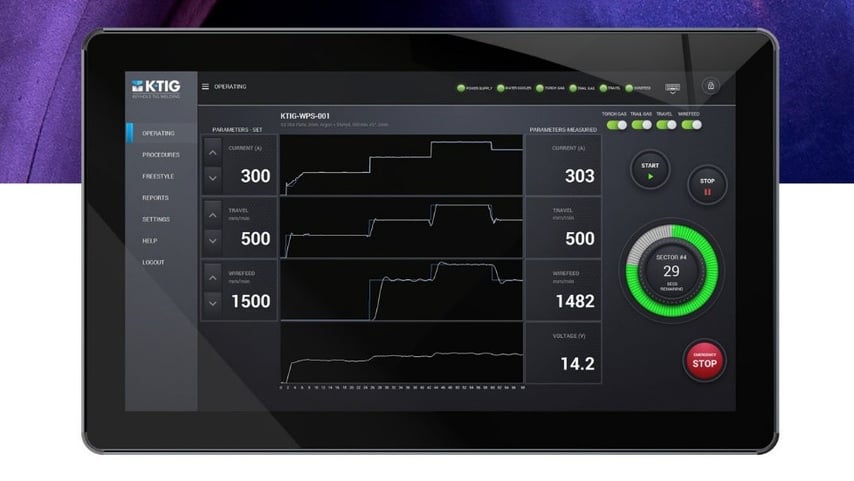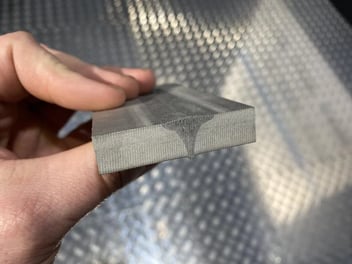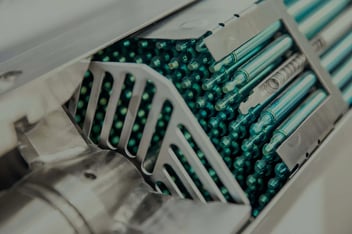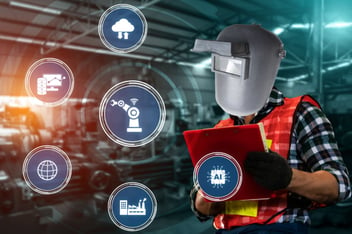What Is Nuclear Welding Without Data Collection?
Nuclear welding is a highly specialized process that involves joining metal components used in nuclear power plants, research facilities, and other nuclear applications. The welding must meet strict quality and safety requirements, and therefore, certain key requirements must be followed to ensure the integrity and reliability of the weld.
Some of the important requirements for nuclear welding include:
-
Welding Procedures: Specific welding procedures must be developed and qualified for each type of joint and material to be welded. These procedures must meet the specific requirements for nuclear applications and be performed by certified welders.
-
Welder Qualification: Welders who perform nuclear welding must be qualified and certified according to specific standards, such as the International Organisation for Standardisation (ISO) and American Society of Mechanical Engineers (ASME) Boiler and Pressure Vessel Code.
-
Material Selection: The materials used for nuclear welding must be carefully selected to ensure compatibility with the intended service conditions and to meet stringent quality and safety requirements.
-
Quality Control: The welding process must be carefully monitored and inspected to ensure that it meets the required standards for quality and safety. Non-destructive testing (NDT) techniques such as X-ray, and dye penetrant testing are often used to detect any defects or imperfections in the weld.
-
Documentation: Comprehensive documentation must be maintained throughout the welding process, including the welding procedures, welder qualifications, material certifications, inspection reports, and any other relevant information.
Why is data collection so important for Nuclear Welding?
Data collection is essential for nuclear welding because it provides crucial information about the welding process, materials, and quality control measures used to ensure the integrity and safety of the welds. Here are some reasons why data collection is important for nuclear welding:
-
Process Control: Data collection helps monitor the welding process and identify any deviations from the established procedures. This capability allows welders to set the parameters to control outcomes, such as the heat input and travel speed, to ensure that the welds meet the required specifications.
-
Quality Control: Data collection provides information on the quality of the welds, including any defects or imperfections that may affect their integrity or safety. This information ensures the weld either conforms or does not conform. Supporting the identification of the defective area in the weld.
-
Materials Traceability: Data collection ensures that the materials used for nuclear welding are traceable back to their source and meet the required specifications. This information is critical for ensuring that the materials are of the highest quality and are suitable for use in nuclear applications.
-
Regulatory Compliance: Data collection helps ensure compliance with regulatory requirements for nuclear welding, such as those established by the Nuclear Regulatory Commission (NRC). This information can be used to demonstrate that the welding process meets the required safety standards and that the welds are of the highest quality.
K-TIG features that make it an ideal solution for Nuclear Welding
K-TIG welding technology has certain features that make it suitable for collecting data points during the welding process:
-
Real-time Monitoring: K-TIG welding technology allows for real-time monitoring of various parameters during the welding process. This includes parameters such as voltage, current, travel speed, and wire feed rate. Real-time monitoring provides immediate feedback on the welding conditions, allowing for adjustments and optimization of the welding parameters if needed.
-
Data Logging: K-TIG welding systems include data logging capabilities, which enable the collection and storage of welding data points. This data can include information on welding parameters, welding time, arc voltage, current, and other relevant variables. Data logging allows for later analysis and evaluation of the welding process and its outcomes.
-
Automated Systems: K-TIG welding systems are incorporated with data collection capabilities recording 20 data points per second. Automated systems can precisely control the welding parameters and ensure consistent weld quality. By standardizing the welding conditions, data collection becomes more reliable and consistent.
-
Data Analysis Software: K-TIG welding systems come with software that allows for data visualization. This software can process the collected data points, generate reports, and help identify trends or anomalies. Data analysis software enhances the ability to interpret and utilize the collected data effectively.
By combining real-time monitoring, data logging, automated systems, and data analysis, K-TIG welding technology offers robust capabilities for collecting and utilizing data points during the welding process. These features enable better process control, quality assurance, and continuous improvement of the welding operations.
We are here to help
If you're a welding company looking to improve your productivity, efficiency, and competitiveness, it's time to consider the benefits of welding automation and the K-TIG welding system. By automating your welding processes, you can reduce welding time and labor costs, while also improving weld quality and consistency.
The K-TIG system is a powerful and cost-effective solution for automating your welding processes. Its advanced technology allows for high-quality welds to be produced quickly and efficiently, making it a valuable investment for any welding operation.
So if you want to take your welding business to the next level, it's time to take action. Contact a K-TIG representative today to learn more about how their welding automation solutions can help your business achieve its goals. Don't let the global welder shortage or the increasing competition hold you back - invest in welding automation and the K-TIG system today to stay ahead of the curve.





